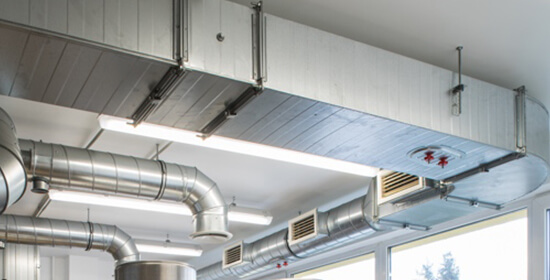
There are 2 major requirements for any duct insulation :
This insulation is required to maintain the temperature of the air inside the ducts. If the air
is cooler (below ambient), heat gain must be prevented. If the air is warmer (above ambient),
heat loss from ducts must be prevented. This is achieved by insulating the duct as per ECBC
prescriptive guidelines, R ≥ 0.6 m2K/W.
Overhead ducts are installed across the entire area of the building. If duct insulation is
combustible in nature, the risk of fire spread increases manifold. As per National Building Code
2016, duct insulation should be non-combustible and should not produce toxic gases in the event
of fire.
Another commonly observed problem is that of condensation. When the surface temperature of duct
insulation is lower than the ambient and humidity is high, moisture condenses, forms droplets
and starts to drip. Selecting the right type and thickness of insulation is critical to control
the effect of condensation over the ducts. Using a suitable vapour barrier to prevent any
moisture from entering the insulation will increase the its longevity.
Keeping in mind the above aspects, we offer glass wool insulation
-
 High thermal resistance
High thermal resistance
-
 Non-combustible, no fire propagation
Non-combustible, no fire propagation
-
 Does not emit toxic fumes/smoke
Does not emit toxic fumes/smoke
-
 Offered with factory applied FSK or Polypropylene facing (lamination)
Offered with factory applied FSK or Polypropylene facing (lamination)
Our insulation solutions with acoustic linings (such as tissue and glass cloth) effectively
reduce noise disturbances caused by air flow and turbulence within a duct while also providing
thermal resistance, prevention of condensation and fire safety.
By using our glass wool insulation with a glass cloth facing inside a duct, the noise is
absorbed by the insulation as sound travels through the porous facing. This reduces the noise
heard outside the duct while also offering excellent thermal resistance.
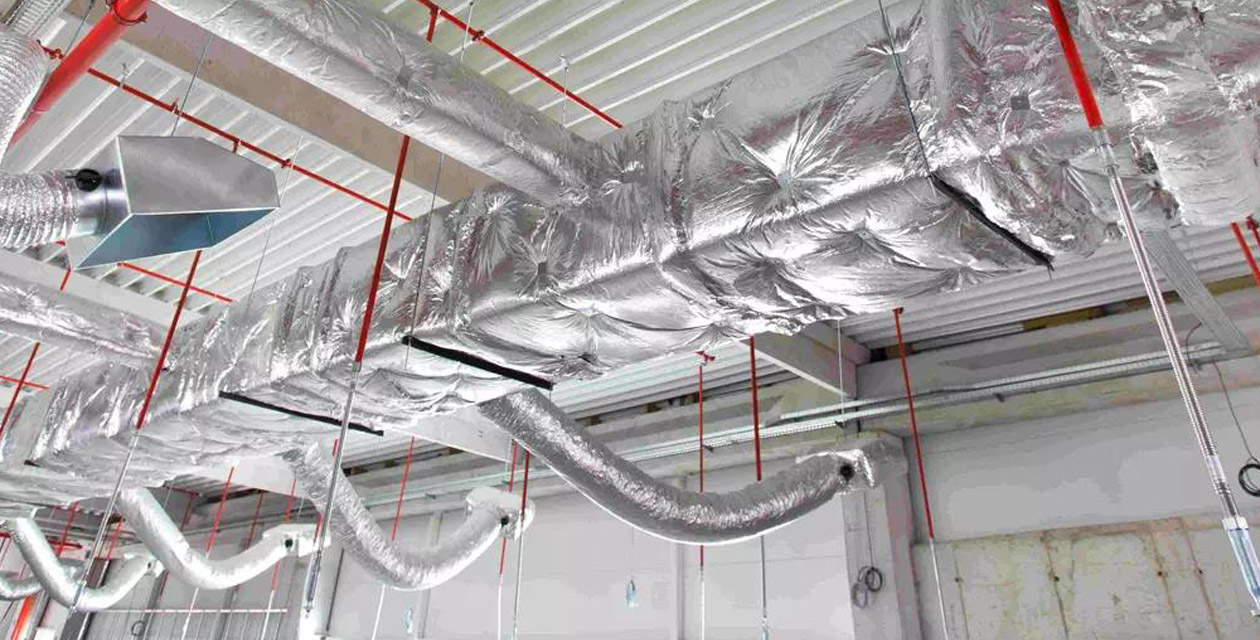
Flexible duct is ideal for short duct runs and intricate locations, offering a versatile connection between HVAC equipment and rigid ductwork. Its flexibility ensures efficient airflow in complex systems, making it perfect for spaces where rigid ducts cannot be implemented
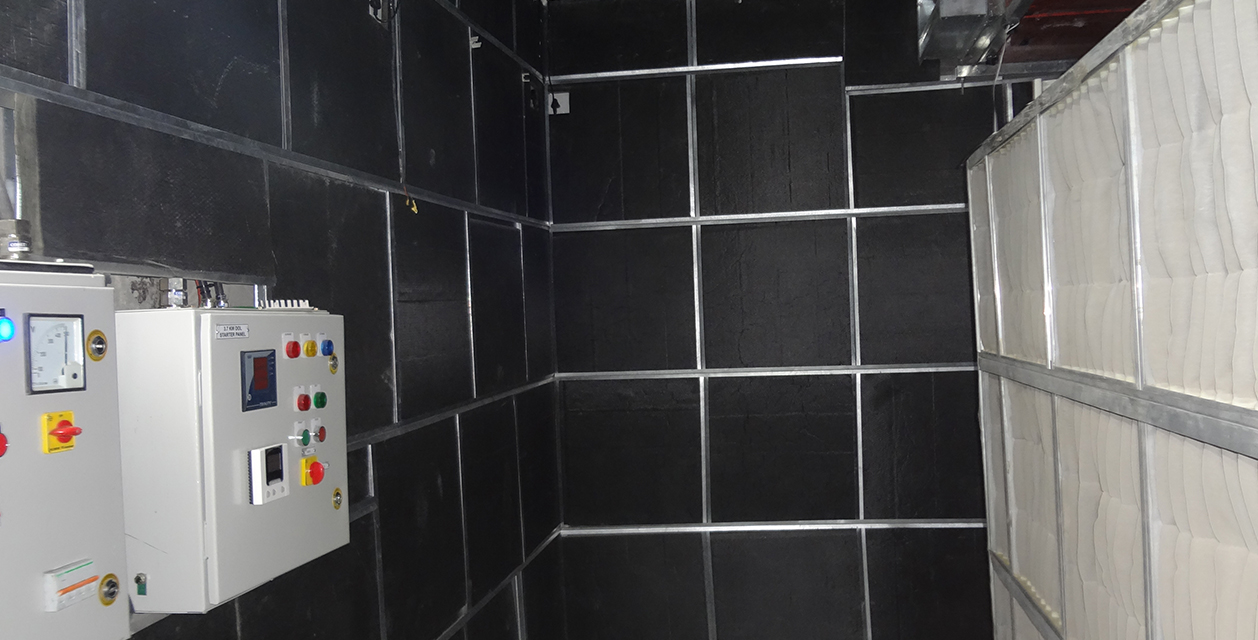
Any HVAC system will also be accompanied by a dedicated AHU and MEP room. Due to the equipments
used in these rooms, noise is generated which can cause disturbance to surrounding areas.
Our Acoustic Board made of glass wool with tough black glass cloth facing is an excellent noise
barrier due to
its high NRC value. These are high density rigid boards which allow easy and fast installation
and do not require perforated metal covering.
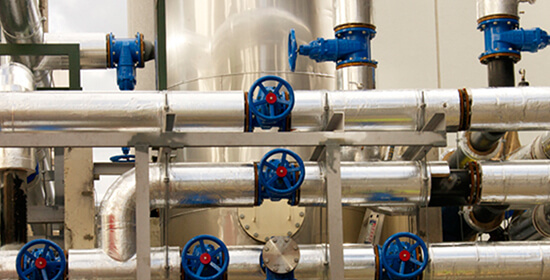
The chilled water pipeline travels from the HVAC chilling plant to the AHU. It is crucial to
maintain the temperature of the pipe consistently along its length to ensure the correct
temperature of air at the output. This is essential for maintaining the effectiveness and
efficiency of the HVAC system.
We offer glass wool insulation in the form of pipe sections with appropriate vapour barriers.
Thes pipe sections are offered in various thicknesses depending on ambient and water
temperature, and also meeting prescriptive requirements of ECBC guidelines, with R values
ranging from 0.4 to 1.2 m2K/W.
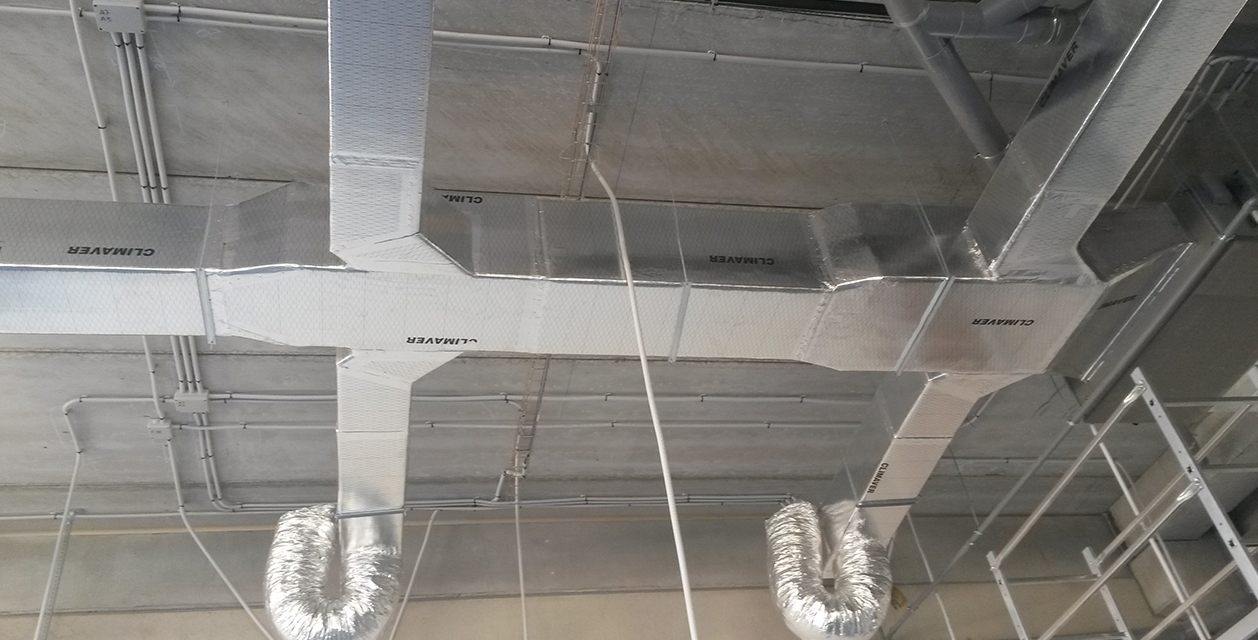
We offer duct boards made of high-density glass wool insulation with suitable laminations on both sides. These boards can be easily converted into ducts with the help of dedicated tools. This non-metallic ducting system reduces the need for metal ducts.
Benefits & Features:
-
 15% Lower Energy Consumption
15% Lower Energy Consumption
-
 70% Lighter Than Metal Duct
70% Lighter Than Metal Duct
-
 Fire Safe
Fire Safe
-
 5 Times Faster Installation
5 Times Faster Installation
-
 High Thermal Resistance
High Thermal Resistance
-
 Good Sound Absorption
Good Sound Absorption
